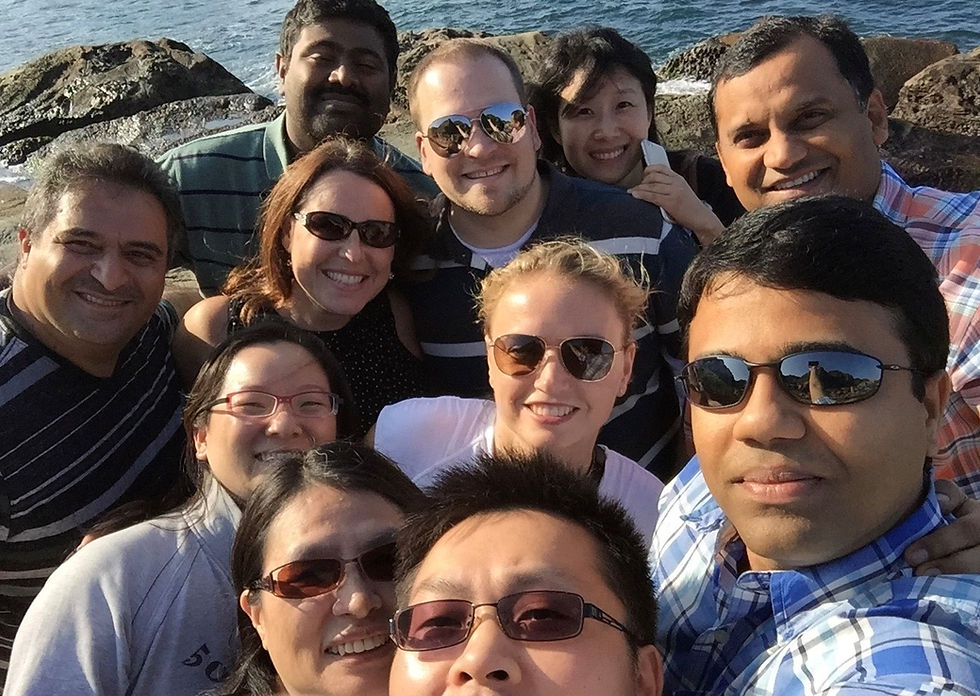Fostering Effective Collaboration in Cross-Functional Projects
- mcgo90
- Oct 9, 2023
- 3 min read

Recently, my company hosted a global summit for project managers. I had the honor of participating in a panel alongside senior PMO leaders, where we discuss some of the common challenges we face across the organization. Successful project execution often hinges on seamless collaboration with a variety of stakeholders across a company. However, many organizations, including our own, face challenges. In this post, we will explore some of the common issues and discuss strategies to resolve them, ultimately enhancing collaboration for your cross-functional projects.
Fundamental Principles of Collaboration:
While many of us are well-acquainted with the foundational principles of collaboration, such as clear communication, team building, mutual respect, flexibility, accountability, and inclusiveness, it is imperative to analyze how we, both as leaders and team members, can actively contribute to improving collaboration.
Shared Vision Enables Easier Collaboration:
One of the most significant barriers to collaboration is the misalignment of priorities. When different groups within an organization have conflicting goals, it often results in misunderstandings, project delays, and reduced project efficiency.
As organizational leaders, it is important that we have a company-first mindset, where alignment of the vision and goals are clear. Clearly defined objectives should be communicated and cascaded throughout all teams, fostering an environment where collaboration becomes more accessible. Aligned priorities will foster an environment where collaboration is easier.
As team members, we should proactively identify misalignments in priorities and escalate them for resolution, avoiding a "hold the line" mentality, which can stifle collaborative discussions.
Listen to Understand:
While it is important to be able to articulate your position, it is even more important to understand other points of view. To do that, we must be ready listen. Don’t just listen to hear but listen to understand. Value diverse perspectives and prioritize constructive dialogue. It is only then we can start to resolve conflicts and incorporate effective decision-making which leads to the establishing of common goals and effective collaboration.
Resource Planning Framework:
Limited resources, whether financial, human, or technological, can strain collaboration efforts. Departments may struggle to allocate resources effectively, leading to bottlenecks and frustration. It is important to establish a framework for resource sharing, and regularly review and adjust allocations to ensure fairness and efficiency. Be open to change and have a framework that allows you to navigate those changes.
There are many tools that can support resource planning. Taking a data-driven approach can help remove the emotion from the equation and simplify the discussion. This also allows for better management and decision-making.
Conflict Resolution:
Understand that it is ok to have conflict. Conflict is an inherent part of collaboration, often leading to improved outcomes when managed effectively. The best collaborators know how to navigate conflict. Develop a clear process for conflict resolution. When disagreements arise, encourage parties to discuss their concerns constructively and seek outcomes that benefit the project as a whole.
Promote a culture that views conflict as an opportunity for growth. When handled appropriately, conflicts can lead to innovation and stronger collaboration. Provide training and tools for conflict resolution to foster productive discussions.
Building and Nurturing Relationships:
Building strong relationships is essential for effective collaboration. Invest time upfront in building these relationships so that when you need to draw upon them, they are readily available. Additionally, recognize and celebrate collaborative successes to boost morale and reinforce the value of working together towards common goals.
Encourage networking and relationship-building among team members. Create opportunities for team bonding and celebrate achievements, big or small, to foster a sense of unity and motivation.
By addressing and overcoming common challenges such as misaligned priorities, active listening, resource constraints, conflict resolution, and relationship-building, organizations can foster a collaborative culture that drives projects towards achievement and innovation. In doing so, we ensure that our teams work together seamlessly, unlocking their full potential for success.



Comments